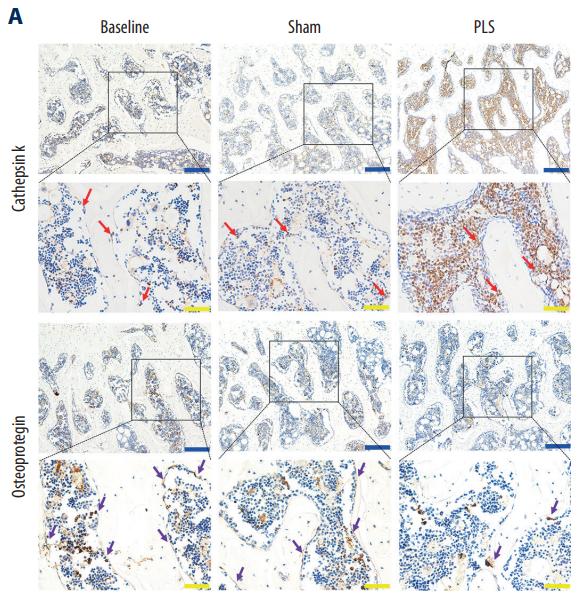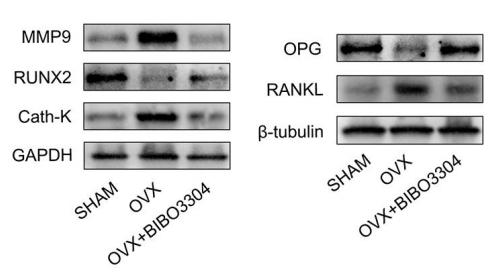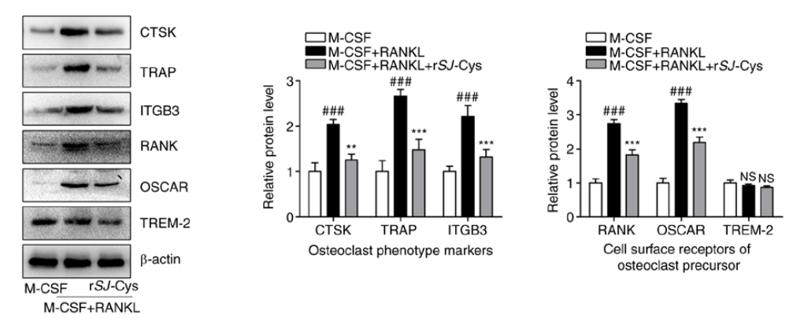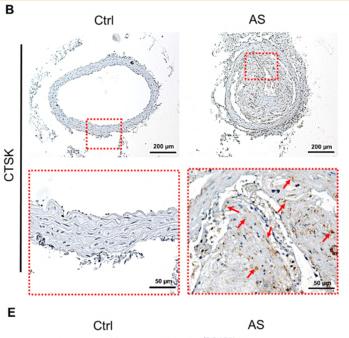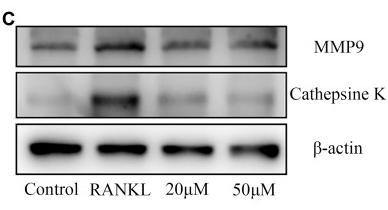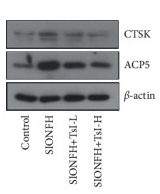CTSK Antibody - #DF6614
製品説明
*The optimal dilutions should be determined by the end user. For optimal experimental results, antibody reuse is not recommended.
*Tips:
WB: For western blot detection of denatured protein samples. IHC: For immunohistochemical detection of paraffin sections (IHC-p) or frozen sections (IHC-f) of tissue samples. IF/ICC: For immunofluorescence detection of cell samples. ELISA(peptide): For ELISA detection of antigenic peptide.
引用形式: Affinity Biosciences Cat# DF6614, RRID:AB_2838576.
折りたたみ/展開
Cathepsin K; Cathepsin O; Cathepsin O1; Cathepsin O2; Cathepsin X; CATK_HUMAN; CTS02; Ctsk; CTSO; CTSO1; CTSO2; MGC23107; PKND; PYCD;
免疫原
A synthesized peptide derived from human CTSK, corresponding to a region within N-terminal amino acids.
Predominantly expressed in osteoclasts (bones) (PubMed:7805878). Expressed in thyroid epithelial cells (PubMed:11082042).
- P43235 CATK_HUMAN:
- Protein BLAST With
- NCBI/
- ExPASy/
- Uniprot
MWGLKVLLLPVVSFALYPEEILDTHWELWKKTHRKQYNNKVDEISRRLIWEKNLKYISIHNLEASLGVHTYELAMNHLGDMTSEEVVQKMTGLKVPLSHSRSNDTLYIPEWEGRAPDSVDYRKKGYVTPVKNQGQCGSCWAFSSVGALEGQLKKKTGKLLNLSPQNLVDCVSENDGCGGGYMTNAFQYVQKNRGIDSEDAYPYVGQEESCMYNPTGKAAKCRGYREIPEGNEKALKRAVARVGPVSVAIDASLTSFQFYSKGVYYDESCNSDNLNHAVLAVGYGIQKGNKHWIIKNSWGENWGNKGYILMARNKNNACGIANLASFPKM
種類予測
Score>80(red) has high confidence and is suggested to be used for WB detection. *The prediction model is mainly based on the alignment of immunogen sequences, the results are for reference only, not as the basis of quality assurance.
High(score>80) Medium(80>score>50) Low(score<50) No confidence
研究背景
Thiol protease involved in osteoclastic bone resorption and may participate partially in the disorder of bone remodeling. Displays potent endoprotease activity against fibrinogen at acid pH. May play an important role in extracellular matrix degradation. Involved in the release of thyroid hormone thyroxine (T4) by limited proteolysis of TG/thyroglobulin in the thyroid follicle lumen.
Lysosome. Secreted. Apical cell membrane>Peripheral membrane protein>Extracellular side.
Note: Localizes to the lumen of thyroid follicles and to the apical membrane of thyroid epithelial cells.
Predominantly expressed in osteoclasts (bones). Expressed in thyroid epithelial cells.
Belongs to the peptidase C1 family.
研究領域
· Cellular Processes > Transport and catabolism > Lysosome. (View pathway)
· Cellular Processes > Cell growth and death > Apoptosis. (View pathway)
· Human Diseases > Immune diseases > Rheumatoid arthritis.
· Organismal Systems > Development > Osteoclast differentiation. (View pathway)
· Organismal Systems > Immune system > Toll-like receptor signaling pathway. (View pathway)
参考文献
Application: IHC Species: Mouse Sample:
Application: WB Species: Mouse Sample:
Restrictive clause
Affinity Biosciences tests all products strictly. Citations are provided as a resource for additional applications that have not been validated by Affinity Biosciences. Please choose the appropriate format for each application and consult Materials and Methods sections for additional details about the use of any product in these publications.
For Research Use Only.
Not for use in diagnostic or therapeutic procedures. Not for resale. Not for distribution without written consent. Affinity Biosciences will not be held responsible for patent infringement or other violations that may occur with the use of our products. Affinity Biosciences, Affinity Biosciences Logo and all other trademarks are the property of Affinity Biosciences LTD.
